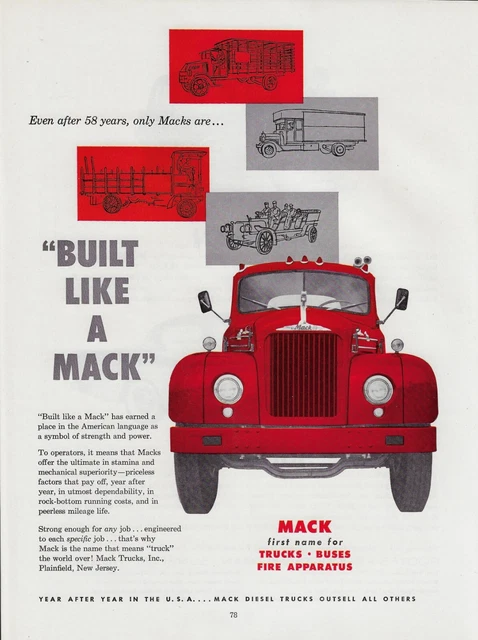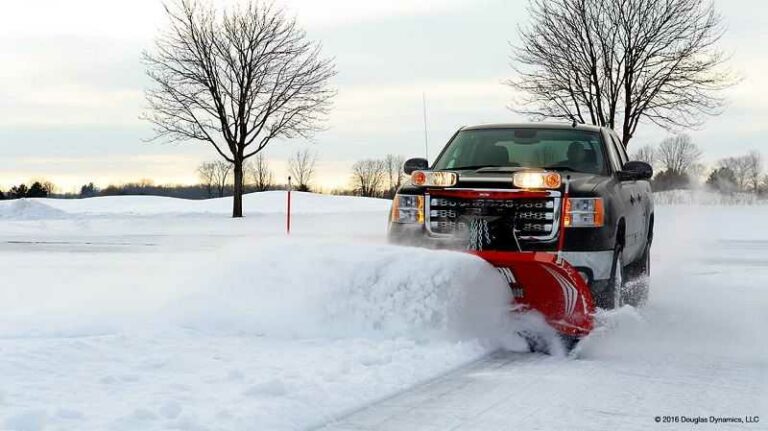Pieces Of Truck Engine: A Comprehensive Guide to the Heart of Your Rig
Pieces Of Truck Engine: A Comprehensive Guide to the Heart of Your Rig cars.truckstrend.com
The roar of a truck engine is more than just noise; it’s the symphony of power, reliability, and precision engineering. For anyone involved with heavy-duty vehicles – be it an owner-operator, a fleet manager, a mechanic, or simply an enthusiast – understanding the intricate "pieces of truck engine" is not merely academic; it’s fundamental to ensuring operational efficiency, safety, and longevity. The engine, often hailed as the heart of a truck, is a complex amalgamation of various components working in perfect synchronicity. Each piece, no matter how small, plays a critical role in converting fuel into the formidable force that moves tons of cargo across vast distances.
This comprehensive guide will dissect the truck engine, exploring its core components and essential support systems. We’ll delve into why this knowledge is invaluable, offer practical advice for maintenance and parts sourcing, and address common queries, empowering you to better understand, maintain, and optimize your truck’s most vital asset.
Pieces Of Truck Engine: A Comprehensive Guide to the Heart of Your Rig
The Core Mechanical Components: The Foundation of Power
At its essence, a truck engine is an internal combustion machine, and its core mechanical components are the heavy-duty workhorses responsible for generating power. These pieces are built to withstand immense pressure and heat, forming the very foundation upon which the engine operates.
- Cylinder Block: Often called the engine block, this is the main structural casting that houses the cylinders, where combustion occurs. It provides mounting points for virtually all other engine components and contains passages for coolant and oil. Made from robust cast iron or aluminum, its integrity is paramount.
- Crankshaft: This is the engine’s backbone, converting the linear (up-and-down) motion of the pistons into rotational motion. It features precisely machined journals that support the connecting rods and main bearings. The crankshaft is directly linked to the transmission, ultimately driving the wheels. Its balance and strength are critical for smooth operation and power delivery.
- Pistons and Connecting Rods: Pistons are cylindrical components that move within the engine’s cylinders. They are pushed downwards by the expanding gases of combustion. Connecting rods link the pistons to the crankshaft, transmitting this force. Both must be incredibly strong yet lightweight, enduring extreme temperatures and pressures thousands of times per minute.
- Cylinder Head: Sitting atop the cylinder block, the cylinder head forms the top of the combustion chamber. It houses the intake and exhaust valves, valve seats, and often the camshaft and fuel injectors. Its design is crucial for airflow, combustion efficiency, and heat dissipation. Modern cylinder heads are often complex castings with intricate cooling passages.
- Camshaft and Valvetrain: The camshaft is a rotating shaft with precisely shaped lobes (cams) that open and close the intake and exhaust valves at the correct times, allowing air in and exhaust gases out. The valvetrain comprises the valves themselves, valve springs, pushrods (in some designs), and rocker arms – all working in concert to control the engine’s "breathing."
- Oil Pan (Sump): While seemingly simple, the oil pan is vital. It’s a reservoir located at the bottom of the engine that collects the engine oil, allowing it to cool and settle before being recirculated by the oil pump. It often contains baffles to prevent oil sloshing during vehicle movement.
Essential Support Systems: Keeping it Running Smoothly
Beyond the core mechanical components, several sophisticated systems ensure the engine runs efficiently, safely, and powerfully. These systems manage fuel delivery, lubrication, temperature, and emissions.
- Fuel System: For diesel trucks, this system includes the fuel tank, fuel lines, fuel pump (often multiple stages), fuel filters, and highly precise fuel injectors. Common rail direct injection (CRDI) systems are prevalent, delivering fuel at extremely high pressures for optimal combustion, efficiency, and reduced emissions. Gasoline engines use spark plugs for ignition, whereas diesel engines rely on compression ignition.
- Lubrication System: Engine oil is the lifeblood of the engine. The lubrication system, comprising the oil pump, oil filter, and intricate oil passages throughout the block and head, circulates oil to reduce friction, dissipate heat, and clean internal components. Proper lubrication prevents premature wear and catastrophic failure.
- Cooling System: The immense heat generated by combustion must be managed. The cooling system includes the radiator, water pump, thermostat, coolant hoses, and often a fan. It circulates coolant through the engine’s passages, absorbing heat and then releasing it to the atmosphere via the radiator, preventing overheating and engine damage.
- Intake and Exhaust Systems: The intake system draws air into the engine, often via a turbocharger or supercharger that forces more air in for increased power and efficiency. Air filters ensure clean air reaches the engine. The exhaust system collects combustion gases, passes them through manifolds, and often through complex aftertreatment systems (like Diesel Particulate Filters – DPFs, and Selective Catalytic Reduction – SCR systems) to reduce harmful emissions before expelling them through the exhaust pipe.
- Electrical and Starting System: This system provides the initial spark (for gasoline) or glow (for diesel) to start the engine, and powers various sensors and the Engine Control Unit (ECU). Key components include the battery, starter motor, alternator (which recharges the battery and powers electrical systems), and the ECU, which acts as the engine’s brain, constantly monitoring and adjusting parameters for optimal performance.


Why Understanding These Pieces Matters: Benefits & Practical Advice
Knowing the "pieces of truck engine" is more than just a matter of curiosity; it offers tangible benefits and actionable insights for anyone operating or maintaining heavy machinery.
- Effective Troubleshooting: When an engine acts up, familiarity with its components allows for more accurate diagnosis. Is it a fuel delivery issue, a cooling problem, or a mechanical failure? Knowing the function of each part helps pinpoint the root cause quickly, saving time and money on unnecessary repairs.
- Informed Maintenance: Understanding what each component does helps you grasp the importance of preventative maintenance schedules. You’ll appreciate why oil changes, filter replacements, and coolant flushes are critical for extending engine life and preventing costly breakdowns.
- Smart Repair and Replacement Decisions: When a part fails, you’ll be better equipped to evaluate repair options, understand quotes from mechanics, and make informed decisions about whether to repair, replace with new, or opt for remanufactured parts. This knowledge empowers you to avoid being oversold or making poor choices.
- Cost Savings and Longevity: Proactive maintenance based on component knowledge significantly reduces the likelihood of major failures, which are incredibly expensive. By recognizing early warning signs related to specific components (e.g., unusual noises, smoke color, fluid leaks), you can address minor issues before they escalate, dramatically extending the engine’s lifespan.
- Performance Optimization: For those seeking to optimize fuel efficiency or power, understanding how components like fuel injectors, turbochargers, or the ECU interact allows for more intelligent upgrades or tuning, ensuring modifications are beneficial and safe for the engine.
Sourcing and Maintaining Engine Parts: Important Considerations
When a component needs replacement, the choice of parts and the approach to maintenance are crucial.
- OEM vs. Aftermarket vs. Remanufactured:
- OEM (Original Equipment Manufacturer): Parts made by the original manufacturer of the engine or parts supplied to them. Generally highest quality, guaranteed fit, but also the most expensive.
- Aftermarket: Parts made by companies other than the original manufacturer. Quality can vary wildly from excellent to poor. Often more affordable, but research reputable brands.
- Remanufactured: Used parts that have been completely disassembled, cleaned, inspected, worn components replaced with new ones, and reassembled to OEM specifications. Often a cost-effective alternative for major components like engines, transmissions, or cylinder heads, offering good quality at a lower price.
- Importance of Quality: Cheap parts can lead to premature failure, damage to other components, and ultimately higher long-term costs. Always prioritize quality, especially for critical engine components.
- Regular Inspection and Preventative Maintenance: Beyond scheduled service, routinely inspect hoses for cracks, belts for wear, fluid levels, and listen for unusual noises. Early detection of issues related to specific components can save thousands.
- Challenges:
- Counterfeit Parts: A significant risk, especially for critical components like fuel injectors or turbochargers. These parts are often poorly made and can cause severe engine damage.
- Complex Diagnostics: Modern truck engines are highly computerized. Diagnosing issues often requires specialized diagnostic tools and software, which can be a barrier for DIY mechanics.
- Solutions:
- Reputable Suppliers: Purchase parts only from trusted dealers, authorized distributors, or well-known aftermarket brands. Be wary of deals that seem too good to be true.
- Professional Mechanics: For complex diagnostics and major repairs, rely on certified heavy-duty mechanics who have the right tools, training, and experience.
Price Table: Common Truck Engine Component Price Ranges
Please note: Prices for truck engine components can vary wildly based on engine make/model (e.g., Cummins, Detroit Diesel, PACCAR, Volvo), year, new vs. remanufactured, OEM vs. aftermarket, and supplier. The following table provides estimated ranges for common parts and should be used as a general guide, not definitive pricing. Labor costs are not included.
| Component | Description | Estimated Price Range (USD) | Notes |
|---|---|---|---|
| Piston & Ring Set (per) | Single piston with rings | $150 – $400 | Varies by engine type and material. |
| Connecting Rod (per) | Links piston to crankshaft | $100 – $350 | Often replaced in sets for balance. |
| Cylinder Head (New) | New, bare cylinder head (no valves/cams) | $1,500 – $5,000+ | Complex casting; price depends on engine and complexity. |
| Cylinder Head (Reman.) | Remanufactured, often complete with valves | $1,000 – $4,000 | Popular option for cost savings. |
| Crankshaft (New) | New, forged or cast steel crankshaft | $2,000 – $8,000+ | Heavy, precision-machined; critical component. |
| Crankshaft (Reman.) | Remanufactured crankshaft | $1,000 – $5,000 | Ground and polished to specifications. |
| Fuel Injector (per) | High-pressure diesel injector | $200 – $600 | Crucial for fuel economy and emissions; often replaced in sets. |
| Turbocharger | Boosts engine power | $1,000 – $4,000+ | Highly engineered component; can be very expensive for larger units. |
| Water Pump | Circulates engine coolant | $150 – $500 | Essential for cooling system; often includes housing. |
| Oil Pump | Circulates engine oil | $100 – $400 | Maintains oil pressure; critical for lubrication. |
| Alternator | Recharges battery, powers electrical systems | $250 – $700 | Varies by amperage output. |
| Starter Motor | Cranks engine for starting | $200 – $600 | Robust unit needed for large diesel engines. |
| Engine Overhaul Kit | Gaskets, bearings, rings, etc. for rebuild | $800 – $2,500+ | Varies greatly by engine model and kit contents. |
| Complete Engine (Reman.) | Fully rebuilt engine, long block or complete | $10,000 – $30,000+ | Significant investment, often preferred over full new engine for older trucks. |
Frequently Asked Questions (FAQ)
Q1: How often should truck engine components be replaced?
A1: There’s no single answer as it depends heavily on the component, engine type, maintenance history, and operating conditions. Wear items like filters, oil, and belts have specific service intervals (e.g., every 10,000-25,000 miles for oil and filters). Major components like pistons, crankshafts, or cylinder heads are designed to last hundreds of thousands of miles, often only requiring replacement during a major overhaul or due to catastrophic failure. Regular inspections are key to identifying wear before it becomes critical.
Q2: What’s the difference between OEM and aftermarket parts, and which should I choose?
A2: OEM (Original Equipment Manufacturer) parts are made by or for the original engine manufacturer, ensuring perfect fit and quality, but at a higher cost. Aftermarket parts are made by other companies and can vary widely in quality and price. For critical engine components like fuel injectors, turbochargers, or internal engine parts, OEM or high-quality remanufactured parts are generally recommended for reliability and longevity. For less critical items like filters or hoses, reputable aftermarket options can offer good value.
Q3: Can I replace engine parts myself, or do I need a professional mechanic?
A3: Simple maintenance tasks like changing oil, filters, or belts can often be done by a mechanically inclined individual. However, replacing major engine components (e.g., pistons, cylinder heads, crankshafts, fuel injectors) requires specialized tools, in-depth knowledge, precise torque specifications, and often diagnostic equipment. Incorrect installation can lead to severe engine damage. For complex repairs, a certified heavy-duty mechanic is highly recommended.
Q4: What are the common signs of major engine trouble that indicate a component issue?
A4: Key warning signs include:
- Unusual noises: Knocking, grinding, ticking, squealing, or rumbling.
- Excessive smoke from the exhaust: Blue (oil burning), white (coolant burning/steam), or black (unburnt fuel).
- Significant loss of power or poor fuel economy.
- Dashboard warning lights: Check Engine Light, low oil pressure, high temperature.
- Fluid leaks: Oil, coolant, or fuel.
- Engine overheating.
- Difficulty starting the engine.
Q5: How can I extend the life of my truck engine and its components?
A5:
- Adhere strictly to maintenance schedules: Regular oil changes with the correct type of oil, filter replacements (oil, fuel, air), and coolant flushes.
- Use high-quality fluids and parts: Don’t cut corners on oil, coolant, or critical components.
- Monitor gauges and warning lights: Address issues immediately.
- Drive properly: Avoid aggressive acceleration, prolonged idling, and consistently overloading the truck.
- Keep the cooling system in top condition: Prevent overheating.
- Regularly inspect for leaks, wear, and loose connections.
Conclusion
The truck engine, with its myriad "pieces," is a marvel of engineering, built to withstand immense demands and deliver relentless power. Understanding these components is not just for mechanics; it’s an empowering asset for every truck owner, operator, and fleet manager. This knowledge transforms you from a passive user into an informed stakeholder, capable of making better decisions regarding maintenance, repairs, and overall vehicle management. By appreciating the intricate dance of pistons, valves, pumps, and sensors, you gain a deeper respect for the heart of your rig and unlock the potential for greater reliability, efficiency, and longevity on the road. The journey of understanding the pieces of a truck engine is truly a journey towards mastery of your machine.







